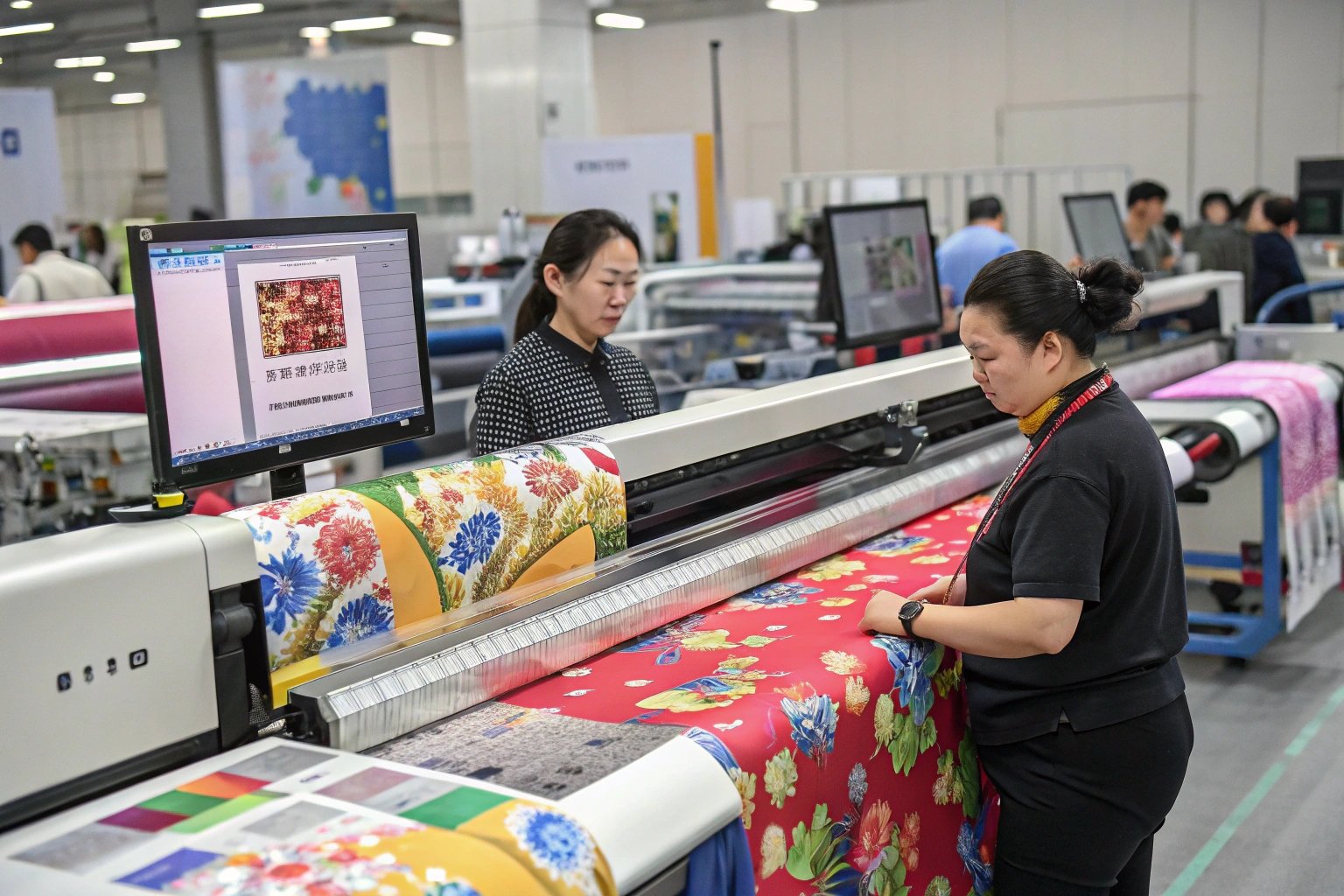Speed is the name of the game. In the world of fashion and textile sourcing, every extra day in production can mean lost sales or missed delivery windows. I’ve worked with brands who needed collections launched within weeks—not months. That’s why digital textile printing has become a game changer.
Digital textile printing reduces lead times by up to 70% by eliminating screen setup, shortening sample turnaround, enabling on-demand production, and streamlining design-to-print workflows.
Traditional methods are slow, inflexible, and expensive for short runs. But digital printing allows us to move from artwork to fabric in hours. Below, I’ll show you exactly how digital printing transforms timelines—and why buyers worldwide are switching.
What Slows Down Traditional Textile Printing?
Let’s face it—rotary screen printing is powerful, but it’s not built for speed. Just preparing screens for one print can take 3–5 days. Add ink mixing, machine setup, and cleanup, and you’re already behind.
Conventional fabric printing requires long prep phases—like engraving, color separation, and screen cleaning—making it inefficient for sampling or fast fashion.
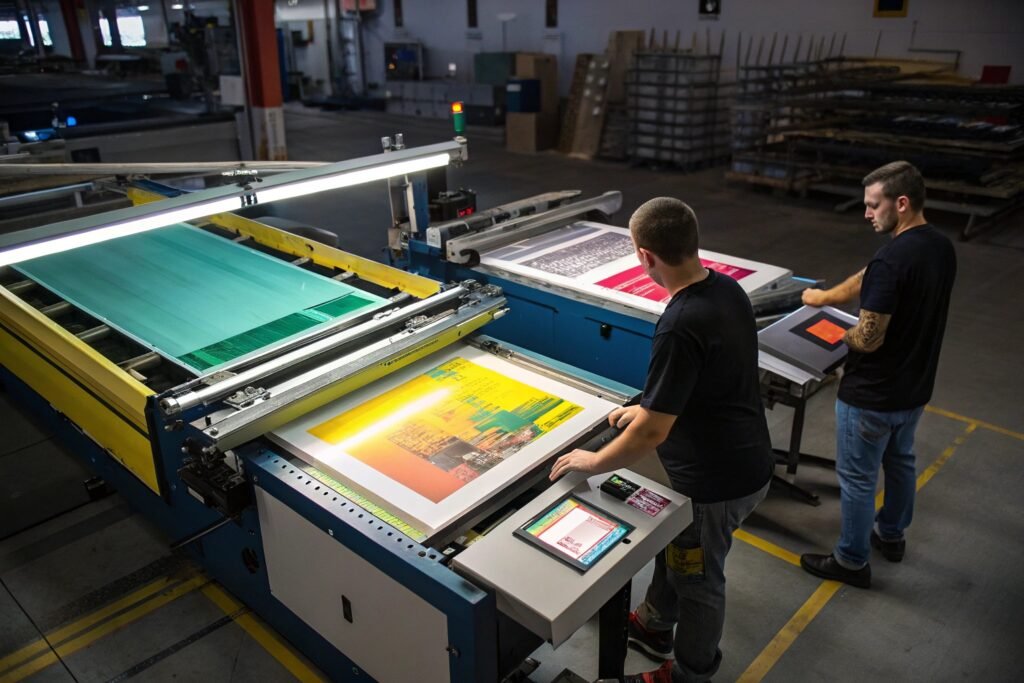
How Long Does Screen Setup Take?
For one pattern with 6 colors, you’ll need 6 engraved screens. That process alone can take a full week, especially with queue times. Now imagine you’re testing multiple designs—that delay multiplies quickly.
Why Is Traditional Printing Slow for Edits?
Every design change means screen changes. Even a small color tweak requires new screens. That’s why traditional printing doesn’t support fast iteration.
| Printing Method | Design Setup Time | Best For |
|---|---|---|
| Rotary Screen Print | 5–7 days | Bulk runs, 1000m+ |
| Flatbed Screen Print | 4–6 days | Scarves, towels |
| Digital Print | 1–2 hours | Sampling, fast fashion |
How Does Digital Printing Cut Development Time?
It starts with the file. Digital textile printing runs from vector or raster image files—no physical screens needed. This means artwork revisions, color adjustments, and size changes are done instantly, on screen.
With digital printing, we can go from a customer’s artwork file to a fabric swatch in as little as 24 hours—slashing weeks from the development process.
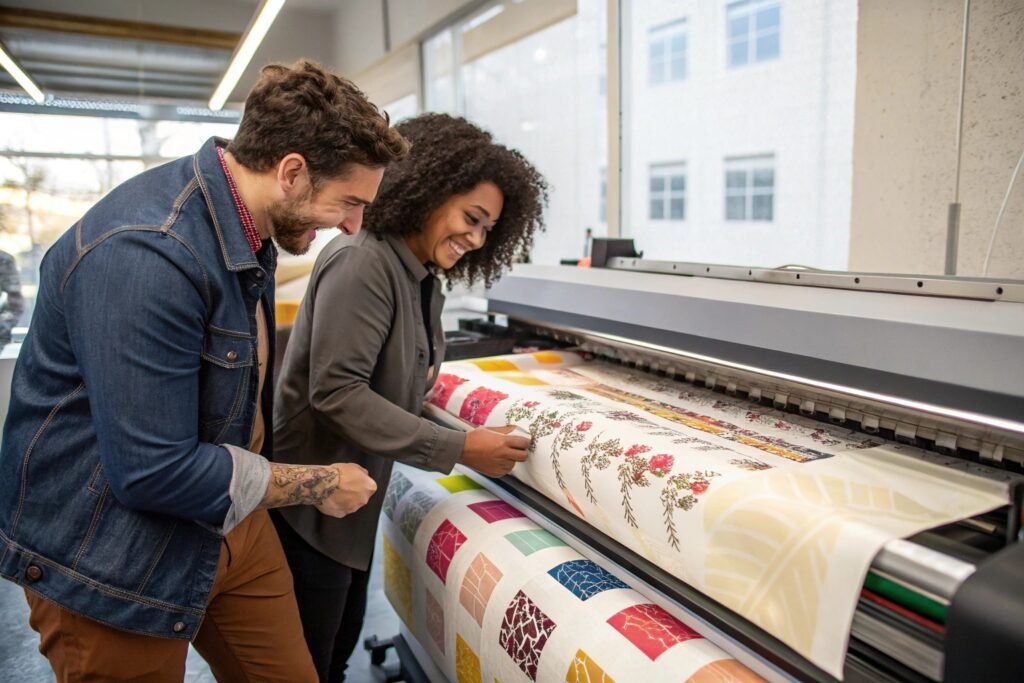
Can Digital Printing Handle Frequent Changes?
Yes. Clients often ask for A/B test samples—different colorways, size scales, or placements. With digital workflows, we can process all variants in the same shift, enabling ultra-fast approvals.
What Kind of Files Are Supported?
Most printers accept TIFF, PDF, AI, or PSD formats. Our design team helps buyers convert CAD files or hand sketches into seamless repeat files ready for printing. No need for screen separations.
| Digital Advantage | Time Saved | Description |
|---|---|---|
| No Engraving Needed | 3–5 days | Direct-to-print artwork |
| Color Matching Tools | Instant | Real-time adjustments |
| Small Sample Production | Same day | Ideal for design approvals |
How Does Digital Printing Support On-Demand Production?
Imagine printing 100 meters in the morning and shipping them in the afternoon. That’s the kind of flexibility digital printing brings. There’s no minimum run requirement for setup, so you can order only what you need—when you need it.
Digital textile printing allows on-demand production with near-zero setup time, enabling just-in-time manufacturing and reducing inventory waste.
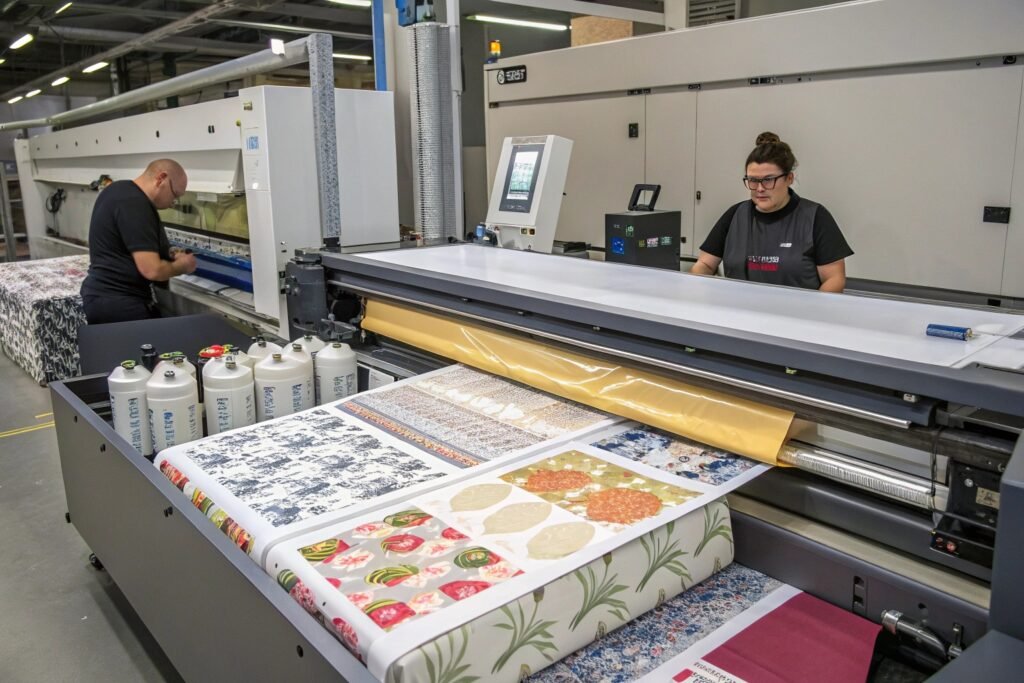
How Small Can the Runs Be?
We’ve produced 10m test orders, 50m limited editions, and 300m capsule collections all within 3–4 days. That kind of responsiveness lets fashion brands move at internet speed.
Does It Work for Bulk Production?
Absolutely. Modern industrial digital printers now output up to 5000m per day. For brands with changing patterns but fixed base fabric, this model wins big.
| Order Type | Delivery Time (Digital) | Traditional Lead Time |
|---|---|---|
| 10m Sample | 24–48 hours | 7–10 days |
| 100m Capsule Run | 3–5 days | 10–14 days |
| 500m Retail Print | 5–7 days | 15–21 days |
How Much Lead Time Can You Save Compared to Traditional Printing?
It’s not just hype—we’ve measured it. Across dozens of projects, our digital textile clients saved up to 70% on pre-production time and 50% on full cycle production. That means faster market entry and higher sell-through.
Digital textile printing can cut overall lead times from 30 days to under 10 by eliminating manual steps and accelerating approvals, printing, and packing.
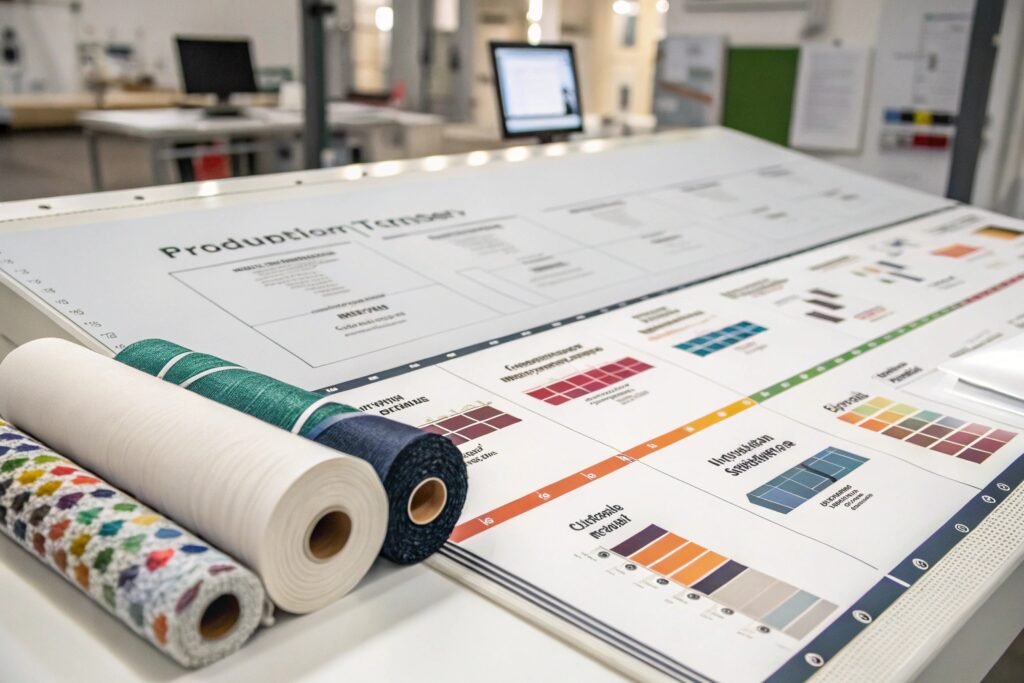
What Does a Typical Timeline Look Like?
Here’s a direct comparison from one of our recent U.S. clients:
| Stage | Rotary Print Timeline | Digital Print Timeline |
|---|---|---|
| Artwork Setup | 5 days | 2 hours |
| Strike-Off Approval | 4 days | 1 day |
| Machine Booking | 2 days | Immediate |
| Bulk Printing | 7–10 days | 2–3 days |
| Total Time | 20–25 days | 7–10 days |
Can This Reduce Inventory Pressure?
Yes. Many of our fashion clients now print small batches digitally, test sell, then reorder with exact colorways. This reduces storage, dead stock, and risk—while improving sell-through rates.
Conclusion
Speed is no longer a luxury—it’s a requirement. Digital textile printing delivers that speed without sacrificing quality or color vibrancy. From cutting sample development to enabling on-demand capsule runs, this technology reshapes what’s possible in textile sourcing. At Fumao, we help brands take advantage of this agility with in-house digital print capabilities, fast file processing, and small-batch-friendly policies. If you're still waiting weeks for your fabric prints, maybe it's time to switch gears and embrace digital.

